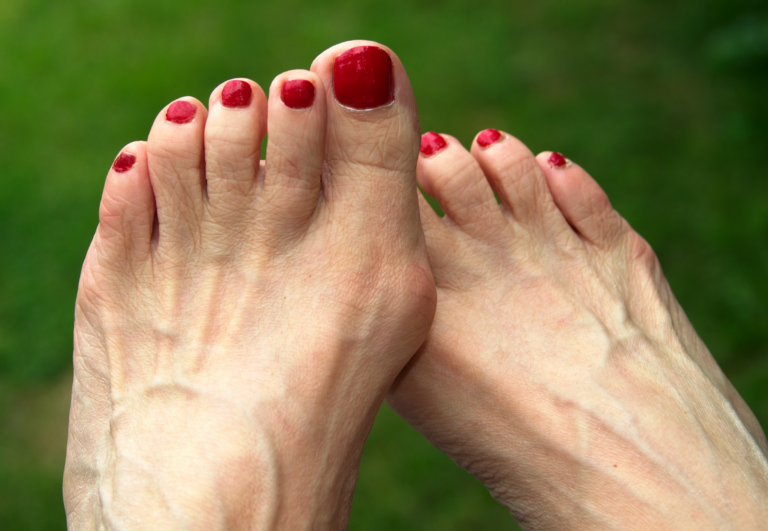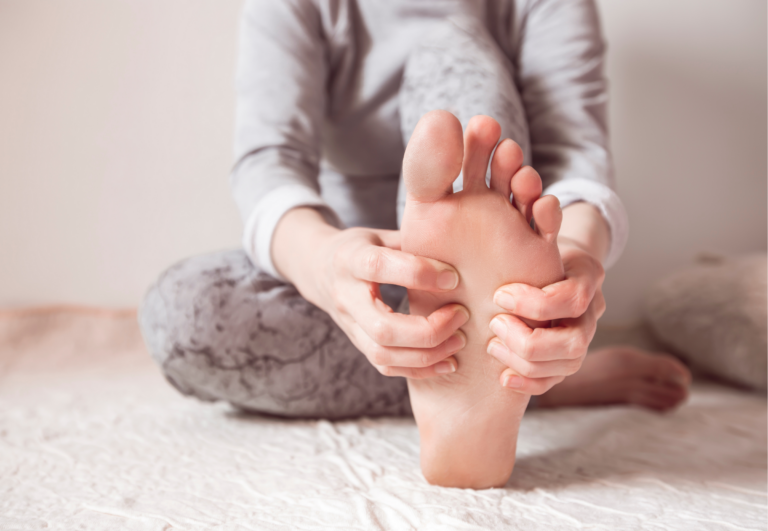How to Use Toe Spacers Effectively for Toe Stretching Exercises
Toe spacers are simple yet effective tools for improving foot health. I’ve found that they promote proper toe alignment, which is essential in maintaining balance and stability. By separating cramped toes, toe spacers can alleviate discomfort from bunions, corns, and overlapping toes – issues frequently caused by restrictive footwear. Regular use can lead to stronger, more flexible feet.
Integrating toe spacers into daily routines is straightforward. I typically suggest wearing toe spacers for a short period each day while resting or during specific foot exercises. This can gradually stretch the muscles and connective tissues, enhancing overall toe mobility and foot function. It’s a practical step toward achieving and preserving optimal foot health.
The benefits of toe spacers are not purely functional; they can also contribute to a more natural foot posture. This aligns well with the body’s mechanics, potentially reducing the strain on feet during activities like standing or walking. In my experience, patients who use toe spacers often report greater foot comfort and a noticeable improvement in their daily activities.
Benefits of Toe Stretching with Spacers
Toe spacers can serve as a valuable tool in maintaining and improving toe and foot health. They aid in stretching and realigning your toes, which can mitigate foot discomfort and enhance overall toe function.
Alignment and Pain Relief
Wearing toe spacers helps restore natural toe alignment, addressing issues such as bunions, hammertoes, and general toe misalignment. This realignment is essential for alleviating pressure and pain in your feet. As spacers assist in correcting the positioning of your toes, they also contribute to relieving pain caused by corns, calluses, and other foot problems related to poor toe placement.
- Bunions: Spacers can prevent your big toe from pushing against the others, worsening bunions.
- Hammertoes: The use of spacers can reduce the bending of the toes that characterizes hammertoes.
Foot Strength and Flexibility
Consistent use of toe spacers promotes foot strength and flexibility, crucial for toe splay and stability. By enabling proper toe splay, toe spacers contribute to better balance and a more comfortable walking experience. They also help prevent the progression of flat feet by encouraging the intrinsic muscles of the feet to stretch and become more flexible.
- Toe Splay: Enhanced toe splay leads to improved balance and mobility.
- Foot Strength: Stronger foot muscles contribute to overall foot health and can prevent future foot pain and injuries.
By incorporating toe spacers into your routine, you can expect not only alignment and pain relief but also improvements in foot strength and flexibility. This creates a foundation for healthier feet and a more comfortable, balanced gait.

Proper Use of Toe Spacers
Toe spacers, also known as toe separators or spreaders, are beneficial for enhancing foot health. They can improve alignment and aid in both foot strengthening exercises and stretching exercises. Using them correctly is crucial for maximizing their potential benefits.
Instructions for First-Time Users
When you’re new to using toe spacers, it’s important to start gradually to allow your feet to adjust. Here’s how to begin:
- Clean the Toe Spacer: Wash your toe spacers with soap and water before first use.
- Start Slowly: Wear the toe spacers for a short duration—start with 5-10 minutes—and gradually increase as your toes adapt.
- Ensure Proper Fit: Sit down and place the toe spacer between your toes, making sure it fits snugly but isn’t overly tight.
- Check for Comfort: Your feet should feel stretched but not in pain. If you experience discomfort, remove the spacers and try again later.
Daily Exercise Routines
Incorporate toe spacers into your daily foot exercises to promote flexibility and strength.
- Stretching Exercises: With toe spacers in place, point and flex your toes, hold each stretch for 20-30 seconds, and repeat for 3-5 sets.
- Foot Strengthening Exercises: Perform calf raises and toe grips while wearing toe spacers to increase foot strength.
- Yoga Toes Exercise: While seated, spread your toes and press them down onto the floor to simulate a ‘yoga toes’ position, hold for counts of 20, then rest.
Remember to listen to your body. If any exercise causes pain, discontinue it and consult with a healthcare provider if necessary. Regular and consistent use is key to seeing improvements in foot mobility and alignment.
Choosing the Right Toe Spacers
When selecting toe spacers, it’s essential to consider the context in which they’ll be used, such as daily activities or managing specific foot conditions, to ensure comfort and effectiveness.
For Everyday Wear
My experience has shown that comfort should be your top priority for toe spacers intended for everyday use. You’ll want to look for soft, flexible materials that complement your daily footwear. Spacers made from silicone or gel are often suitable for all-day wear, as they can flex with your toes and maintain comfortable wear. Consider these aspects:
- Compatibility with Socks: Can you wear the spacers with your regular socks? Ensure they fit snugly but not too tight.
- With Footwear: Opt for slim-profile spacers that fit comfortably inside barefoot or minimal shoes. They should complement, not compromise, the shoe’s fit.
- Durability for Daily Use: Look for high-quality, washable materials that endure frequent use without losing shape.
For Specific Foot Conditions
If you’re working with certain foot conditions, the right toe spacers can be a critical part of your regimen, which might include orthotics, insoles, or night splints. In this case, spacers should be chosen based on their therapeutic value and should be used as directed by a foot care specialist. Remember:
- Targeted Support: Some spacers are designed with added support to address issues like bunions or hammertoes.
- Material Firmness: For correcting alignment, firmer materials may be more effective.
- Compatibility with Orthotics: Ensure that the toe spacers can be used in conjunction with any custom orthotics or insoles you might already be using.
By focusing on these specific factors, you’ll be able to select the right toe spacers for your needs, whether for everyday comfort or targeted therapeutic use.
Integrating Toe Spacers into Your Lifestyle

Integrating toe spacers into daily routines can be straightforward. They offer a practical solution for stretching foot muscles and enhancing foot health, especially for those who frequently wear high heels or spend extended periods standing.
Combining with Footwear
In selecting the right gear for your feet, it is essential to pair toe spacers with footwear that allows for enough space and comfort. Here’s how:
- Athletes: Look for shoes that have a wide toe box to accommodate toe spacers without compressing the toes, maintaining athletic performance.
- High Heels: If you wear high heels regularly, using toe spacers before or after wearing heels can help in alleviating the forces exerted on foot ligaments and muscles.
For the best experience, choose toe spacers that are easy to clean and made of materials such as silicone, which tend to be durable and maintain their shape.
Incorporating into Fitness Regimes
Toe spacers can be included in fitness regimes to potentially benefit foot health and performance. Check out the approaches below:
- Pre-Workout: Slip toe spacers on before exercising to prepare your foot muscles and ligaments for the upcoming activity.
- Post-Workout: Using toe spacers after workouts can aid in recovery by helping to realign the toes and reduce stress on the feet.
Athletes may find that consistent use of toe spacers helps in preventing foot conditions related to overly tight footwear and repetitive stress. When considering price, opt for a balance between quality and affordability to ensure both effectiveness and value.
The Basics of Toe Spacers
Toe spacers are essential tools for individuals seeking to improve foot health through toe stretching exercises. My focus in this section is to guide you on the different types available and how to ensure the perfect fit for maximum benefit.
Types and Materials
Toe spacers are crafted from various materials, each offering unique benefits. The most common materials are:
- Silicone: Known for its durability and flexibility, silicone toe spacers provide a comfortable, snug fit and are often used for extended periods.
- Gel: Gel spacers conform closely to the contours between toes, offering a more customized fit and are ideal for sensitive skin.
- Foam: Although less durable, foam spacers are soft and can be a good choice for short-term use or for those new to toe spacers.
For a lasting solution, I recommend medical-grade silicone toe spacers as they balance comfort and hygiene.
Sizing and Fit
Proper sizing and fit are crucial when selecting toe spacers. Improperly-sized spacers can cause discomfort or slip out of place. To ensure a secure fit, consider the following:
- Size: Choose spacers that correspond to your foot size and toe width. Most products come in small, medium, or large.
- Comfort: The spacer should fit snugly, but not so tight as to cause pain or cut off circulation.
- Secure Fit: Your toe spacers should stay in position during movements and not bunch or slide, which could indicate an incorrect size.
Remember, the right toe spacer should feel like a natural extension of your foot, enhancing your toe stretching exercises without hindering movement or causing additional issues.
Consulting Professionals and Next Steps
While toe spacers are helpful for promoting proper toe alignment and enhancing foot health, it’s wise to seek expert advice for optimal results, especially if you have pre-existing foot conditions.
When to See a Podiatrist
I always emphasize the importance of consulting with a podiatrist—especially for individuals with diabetes, rheumatoid arthritis, hallux valgus (bunions), hammertoes, neuromas, or persistent foot pain.
These professionals can diagnose complex issues, recommend surgery if necessary, and prescribe custom orthotics for improved foot mechanics. Don’t hesitate to schedule an appointment if you’re experiencing:
- Chronic pain, not relieved by toe stretching or spacers
- Signs of blood flow issues or blisters from friction
- Ingrown toenails, crowding of toes, or plantar fasciitis symptoms
- Concerns about injury or exacerbation of existing conditions
A podiatrist, or DPM, can also guide you on how to safely introduce toe spacers into your regimen, avoiding unwanted side effects.
Advanced Toe Spacer Techniques
Once I’ve got the green light from a professional, I delve into more advanced techniques with toe spacers. These are designed to further engage the intrinsic muscles of the foot, aiding in stability and balance:
- Stretching Exercises: Incorporate specific stretches that target the toe’s flexor and extensor muscles.
- Resistance Training: Practice picking up items with the toes to improve muscle strength.
- Wearing Schedule: Gradually increase the duration of toe spacer wear to condition the feet and prevent overuse issues.
Always stop and reassess if you feel excessive discomfort. Toe spacers can be found at any drug store, but, for advanced techniques and specialized products, I recommend professional consultation or even a virtual consultation with a podiatrist to ensure safety and effectiveness.





